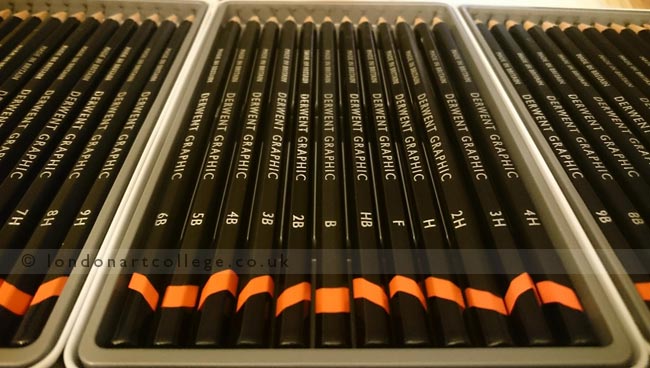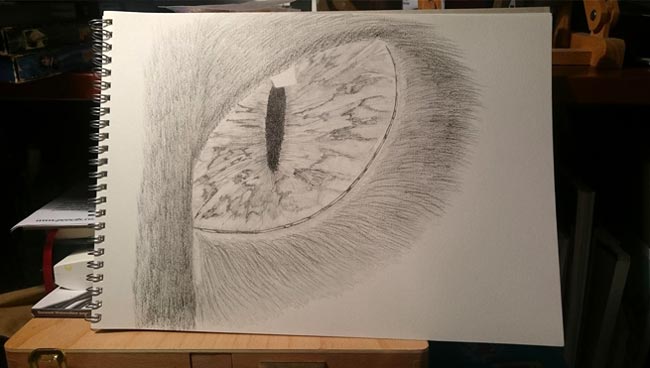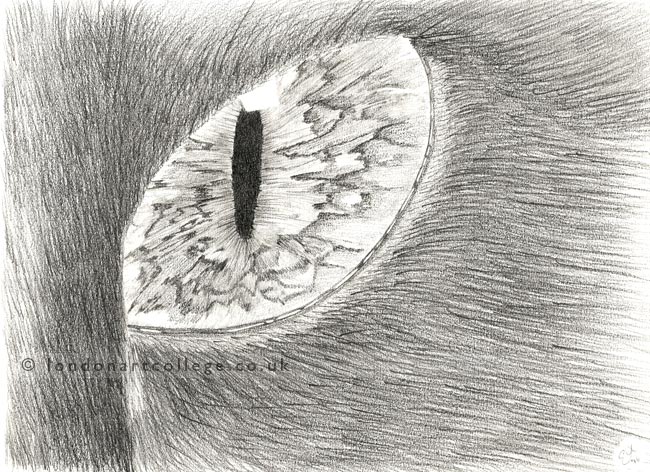My name is Emily Miller and I am studying the Illustrating Children’s Books Diploma Course with the London Art College. I’ve never really used more than a few pencils, using HB, H, and 2B when drawing and, in recent years I have leaned toward mechanical pencils, HB being my main companion – so I was thrilled to be offered the opportunity as a tester to experiment with the whole range of Derwent graphite pencils and see if they could convince me back to the more traditional pencil again – and develop my skills as a student and artist.
My main queries about the range were focused around which pencils to use and why. And of course what makes them stand out amongst the vast quantities of pencils available.
My ultimate question, however, was – will I find out what the ‘F’ is about in the middle of the range of H’s and B’s?!
On receiving the pencils I was pleased to see three tins which covered the whole range, with an adequate overlap in each tin. So you could buy a hard, soft, or mid-range pencils in one tin if you prefer.
The tins have a nice feel and they are lighter than those I have owned in the past, which suggests an aim to reduce the carbon footprint (bonus) while still being adequate to protect the pencils inside. They also look fresh and nice, with pleasing drawings demonstrating the type of effect you could create (presumably) with whats in the tin. Appealing to those whose skills are already at that level, and motivating those whose skills are perhaps at a lower level, such as myself, to develop.
Opening the tins was a bit like that moment you open the big tin of chocolates in the early moments of the Christmas holidays – before the family grab their favourites. The slight scent of wood and the matt finish of the pencils all lined up was wonderful, and of course I couldn’t resist the urge to turn them all round so they were all lying with their print facing upward! Perfectionists heaven.
It was lovely to see the orange stripe at the bottom of each pencil, which reminded me of my trips to Derwent’s pencil museum in Keswick. Holding the new pencils I noticed how light they felt. Which was quite a nice comparison to the mechanical pencils I’ve become accustomed to. But they still felt solid and the traditional Derwent shape with the six sides feels nice to hold while drawing. So, I set to sketching out the shape of the cats eye I’d chosen to draw. Using the 2B (straight to my comfort zone!) for the outline and experimenting with the 9H for the reflection of the window. Remembering the scratchy sensation of the harder leads from my school days which put me off using them, I wondered if I’d end up ruining the drawing with one of those pesky grains that scores the paper before you realise it’s there. We’ll see.
I used a variety of the pencils to develop guides for the shapes beginning the work of drawing the tiny muscles in the iris. This is where the pencils started to show themselves, using the different leads helped to really develop the gradients and easily create the tiny shadows. The H range was surprising, the H, which I am familiar with, was as to be expected, but as I experimented with the harder grades, up to 9H, I really got a feel for the lightness they can portray, enabling detail and layering.
I spent about four and a half hours or more developing this A4 picture, and half of that was on the hair around the eye, which consists of pencil strokes in the direction of the growth of the hair. This was where the pencils came into their own for me, using the different grades to help layer the hundreds of pencil strokes needed to give the right effect.
Using the wide range of pencils really helped to push this picture from a potentially flat sketch to a much more accomplished picture and helped to facilitate my ongoing learning as a student. In the past I might have pooh-poohed the concept of using the various available lead softnesses to get the required effect, but I’m glad I’ve had the chance of experimenting and developing my understanding of this type of work. I used the whole range and really got a feel for them.
My questions have almost all been answered: Which pencils to use, and when, comes quite naturally and is really pleasing. The range from light to dark gives you great scope to play around with the feel of the picture and really develop depth.
What makes the Derwent pencils stand out? Well, the overall look and feel appeals, and the light feel of the pencils. The feel of the pencil in your hand is comfortable and easy. The range available is fabulous, especially given that you can buy any of the three tins with a good range in each. Plus I didn’t experience that awful moment of a pesky hard grain that scores your paper, which was a relief!
Derwent say they have developed a pencil which responds well to use of a rubber – and in my experience on this piece I did notice that the lines moved easily when correcting errors and also to lift the graphite for effect, as I did around the iris muscles, for added depth was easy and the effect was pleasing.
And to compare them to my trusty clutch pencils? Well, for use at my desk these pencils were light and pleasing to use. There is a confidence and trust developed in using the pencils. With a clutch pencil you might spend some time with small boxes of leads swapping one grade for another – breaking them in the process, and of course with the Derwent pencils that issue isn’t apparent!
Perhaps the only thing I’d say is the tin is a bit more of a faff in travelling than a mechanical pencil – especially as the lids detach which spells disaster in a rucksack. But that’s nothing a good pencil case can’t solve!
All in all this has been a really pleasant return to graphite pencils. Has it converted me back? Well they are certainly are a welcome addition to my ever-growing collection of art materials and I’ll be using them when I can.
Did the pencils give up their secret as to why there is an ‘F’ in between the H’s and B’s? As a pencil it did sit nicely in the centre, holding itself between the two camps. But sadly the pencils didn’t give up the answer to that eternal mystery and I guess I’ll just have to google it!
Emily Miller
Illustrating Children’s Books Course
London Art College



